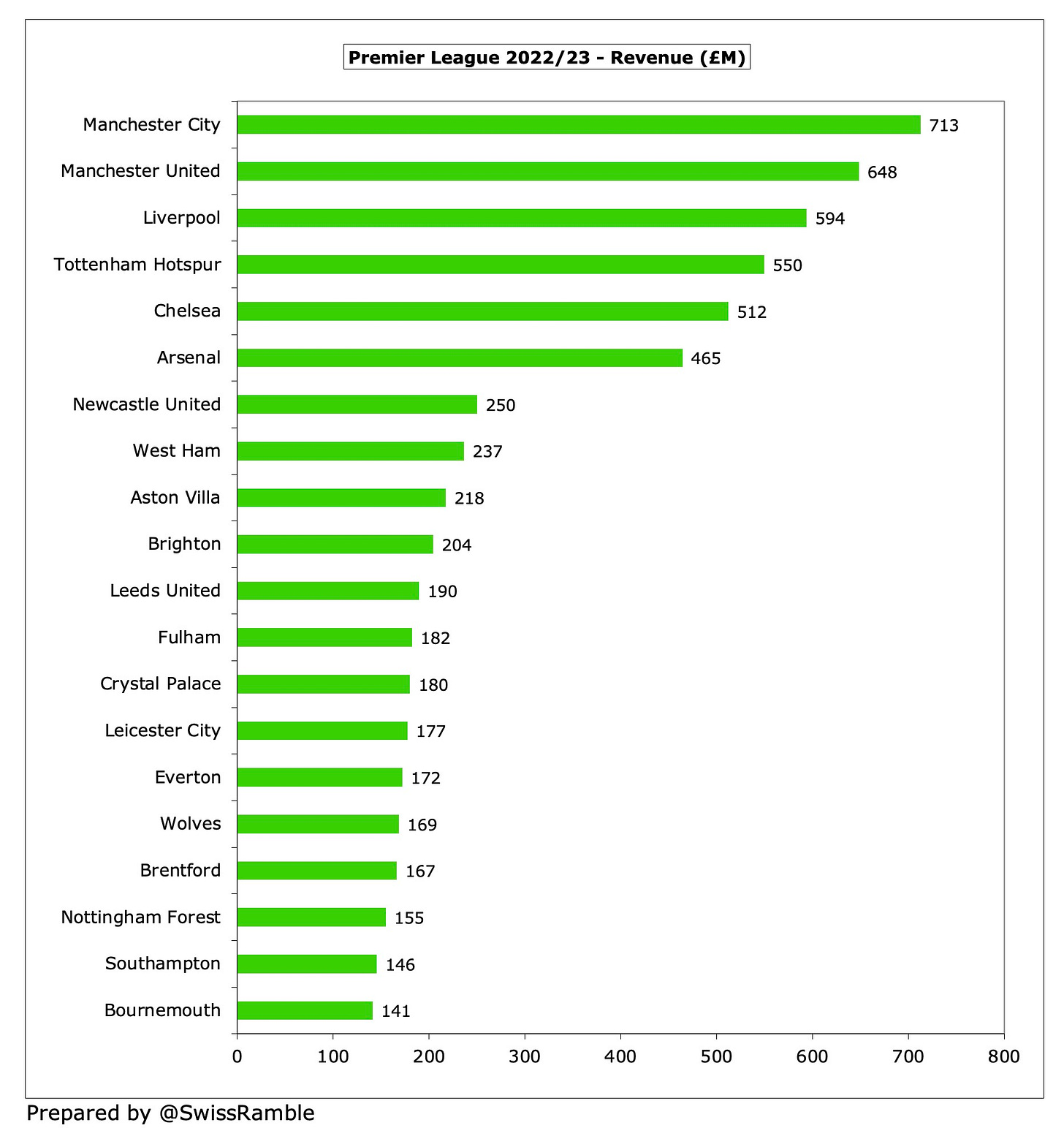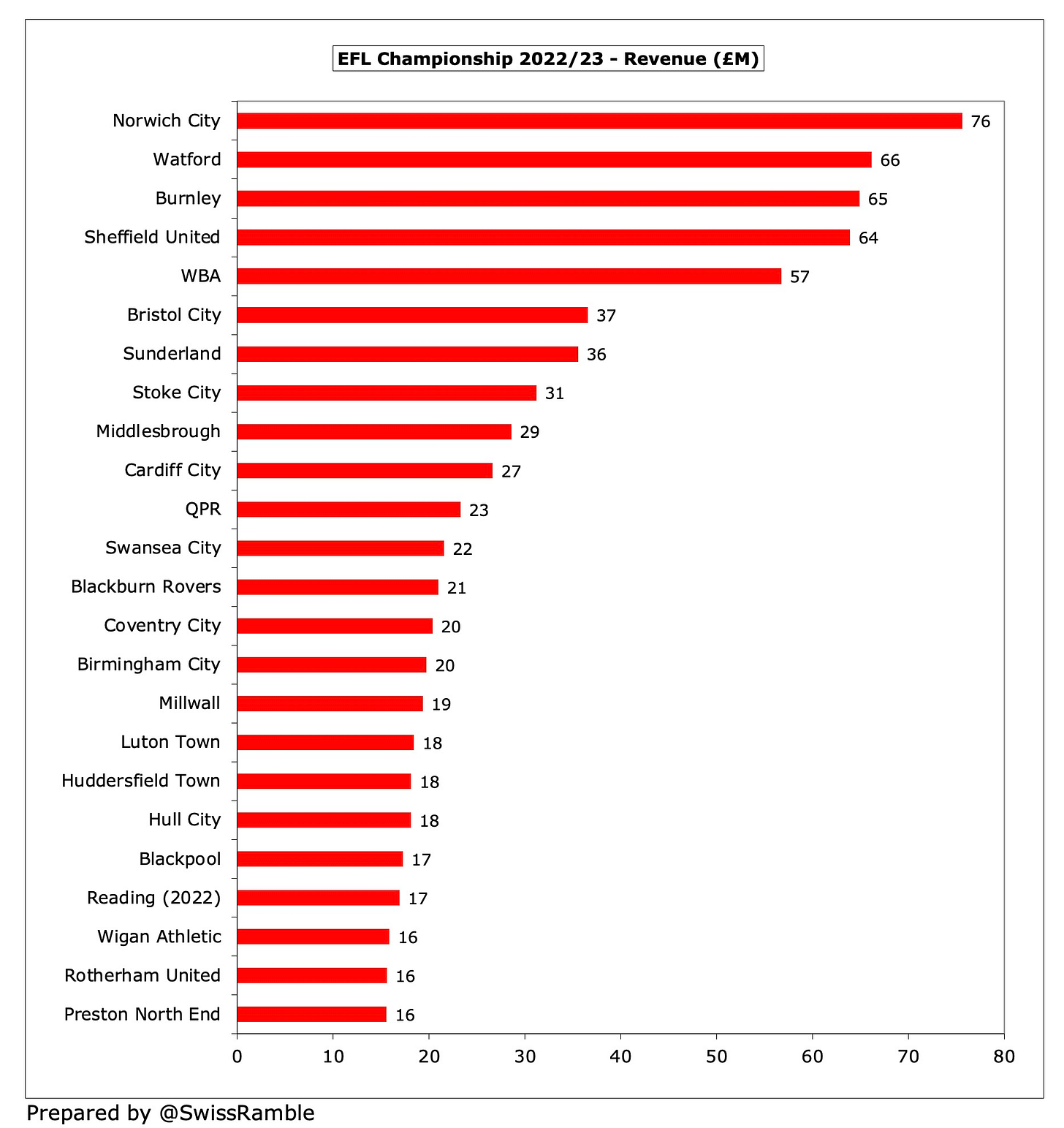Most football fans know that the 92 clubs in the English professional leagues are split between four divisions, namely the Premier League, the Championship, League One and League Two.
However, if we were to look at this in terms of economic considerations, this would be a lot more nuanced, as there are significant differences between the financial firepower at various clubs, even within the same division.
There are many ways of looking at this, but let’s start with revenue, as that defines a club’s ability to spend.
Premier League
The Premier League is obviously the top of the tree, generating more than £6 bln in revenue., though the lion’s share is made by the Big Six, whose £3.5 bln accounts for 57% of the total.
There is a clear gap between the elite and the rest of the league.
EFL Championship
The Championship had £747m revenue in 2022/23, which was just 12% of the Premier League’s £6.1 bln. This helps explain why so many clubs in this league push themselves to their financial limit in an attempt to secure promotion.
There is a similar disparity in this division, as there is a sizeable gap between the clubs receiving parachute payments, following relegation from the Premier League, and the rest.
In this way, the five parachute clubs had £327m of revenue, while the other 19 clubs only generated £420m between them.
EFL League One
Even in League One, we can see that some clubs benefit from more revenue than their rivals. Obviously, the amounts of money are much smaller, but there was clear water between the top four and the other clubs in 2022/23.
Keep reading with a 7-day free trial
Subscribe to The Swiss Ramble to keep reading this post and get 7 days of free access to the full post archives.






